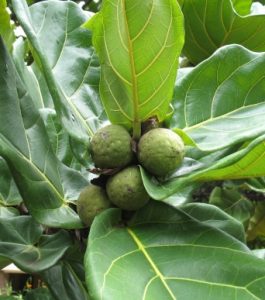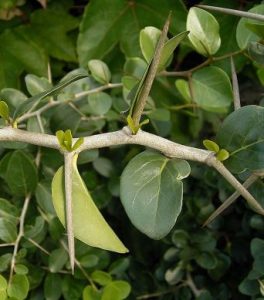 Common Name: Grain amaranth
Common Name: Grain amaranth
Description
Amaranthus cruentus is a flowering plant species that yields the nutritious staple amaranth grain. It is one of three Amaranthus species cultivated as a grain source, the other two being Amaranthus hypochondriacus and Amaranthus caudatus. In Mexico, it is called huautli (Spanish pronunciation: ] and alegría and in English it has several common names, including blood amaranth, red amaranth, purple amaranth, prince’s feather, and Mexican grain amaranth. In Maharashtra, it is called as shravani maath or rajgira . . . . .Read more
References
Switchboard
Wikipedia
Meet the crops
Uapaca kirkiana
 Common Name: Wild loquat
Common Name: Wild loquat
Description
Uapaca kirkiana is a small to medium-sized evergreen or semi-deciduous tree with spreading multiple branches forming a dense rounded crown. The trunk is short and stout, attaining a height of 5-12 m and diameter of 5-25 cm. The bark is dark grey or grey-brown, thick and deeply fissured. Branchlets short, thick with prominent leaf scars. The young shoots are covered with creamy-brown hairs.
Leaves are simple and alternately arranged in clusters concentrated at the ends of branchlets. …Read more
Resources.
Switchboard
Wikipedia
Dovyalis caffra
 Common Name:Kei Apple
Common Name:Kei Apple
Description
Dovyalis caffra is a shrub or small evergreen tree, usually 3-5 m in height, but sometimes reaching 8 m. Bark grey, smooth on young branchlets but fissured and flaky to corky on old branches and stems. Young branches heavily armed with long (40-70 mm) spines, but stem with few spines. Crown much branched. Root system is not aggressive.
Leaves simple, often in tight clusters or fascicles, on dwarf lateral branches; alternate on young shoots; dark green with a waxy lustre, with 3-5 prominent veins from the base on both sides, narrowly obovate to broadly obovate-elliptic, 2-5.5 x 0.5-3 cm; apex rounded.…Read more
References
Switchboard
Wikipedia
Adansonia digitata
 Common Name:Baobab
Common Name:Baobab
Description
Adansonia digitata is a large, round canopied tree with a swollen trunk, about 10-25 m in height, often with a bole of 3-10 m (giant individuals attain a girth of up to 28 m); bark is soft, smooth, fibrous, reddish-brown, greyish-brown or purplish-grey; bark of leaf-bearing branches is normally ashy on the last node; a green layer below the outer, waxy layer of the bark, presumably to assist in photosynthesis when the tree has shed its leaves.. . …Read more
References
Switchboard
Wikipedia